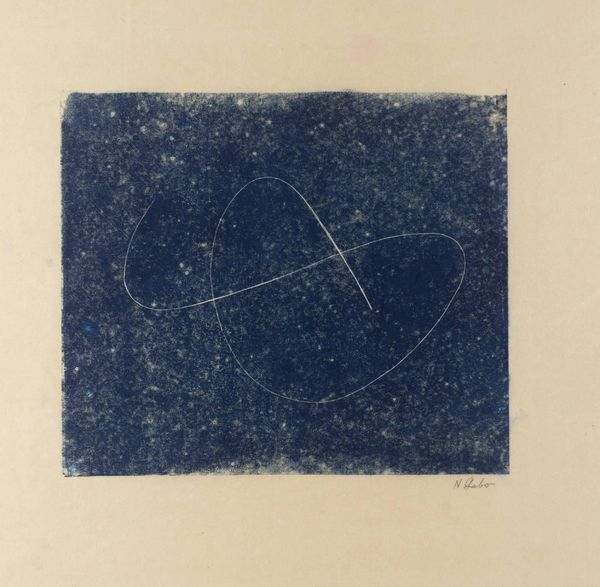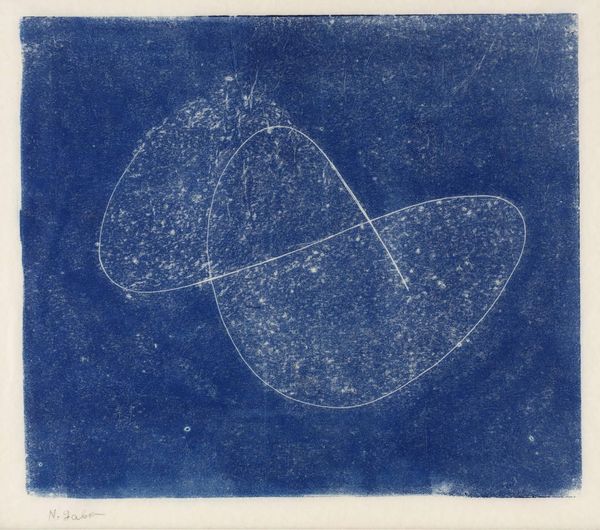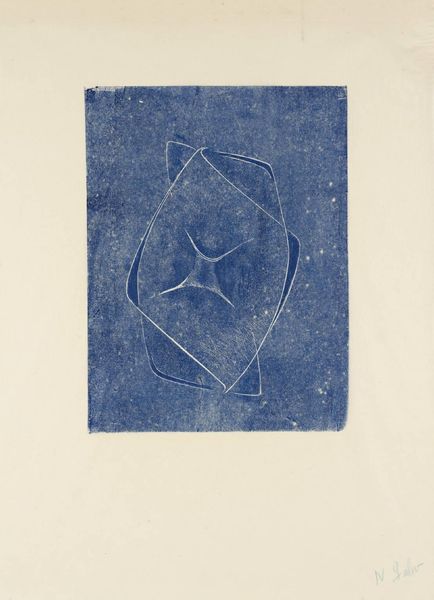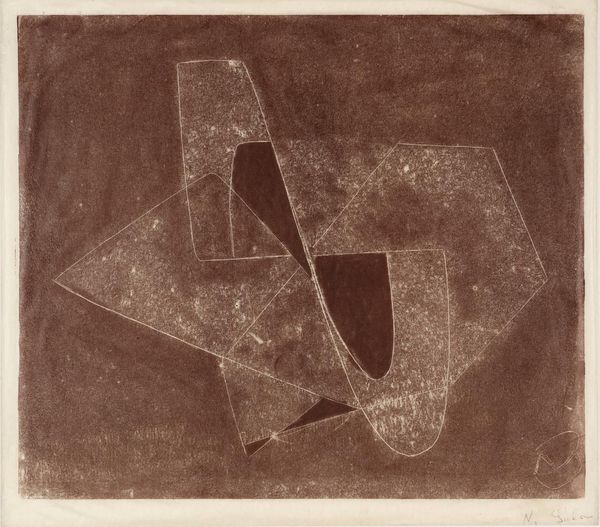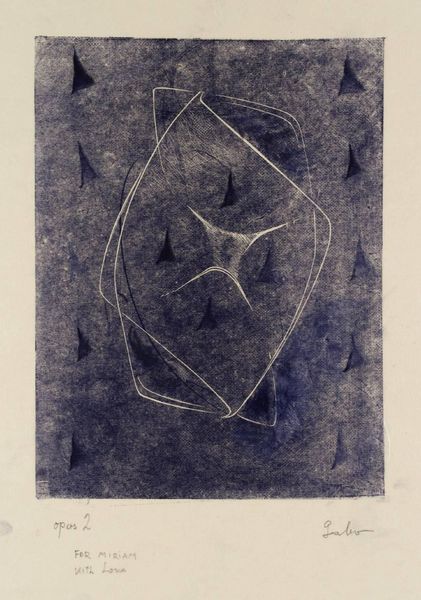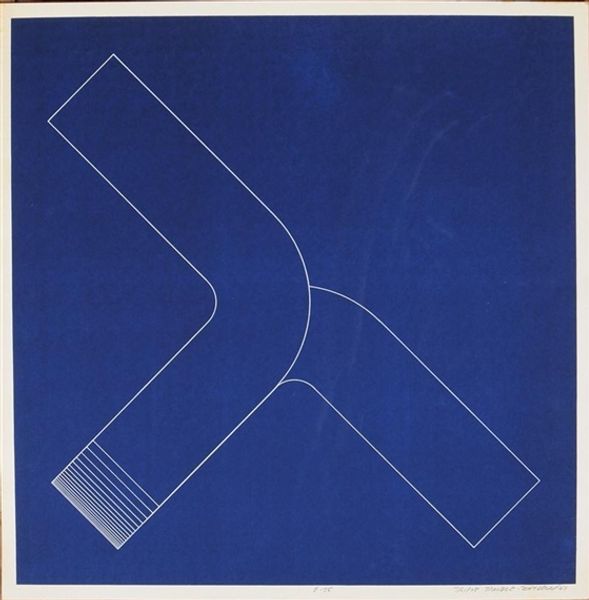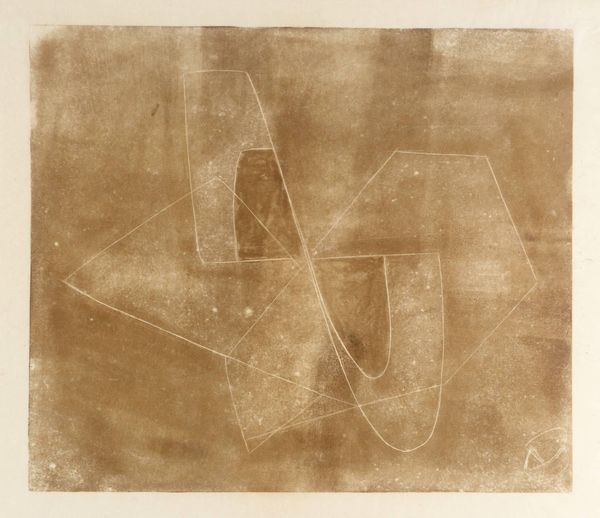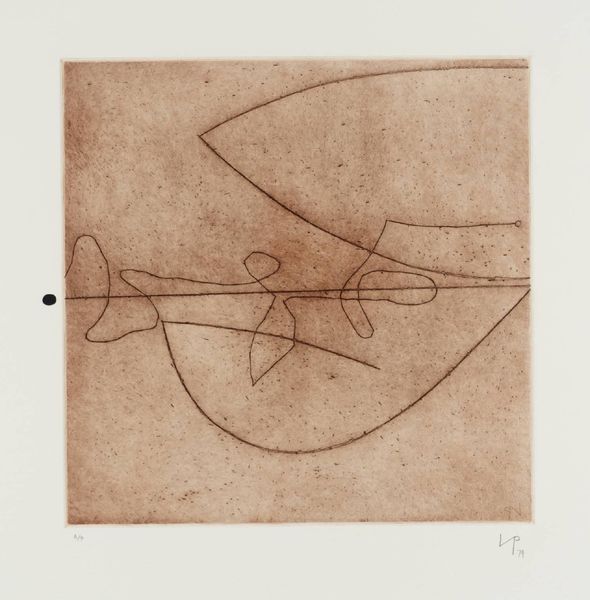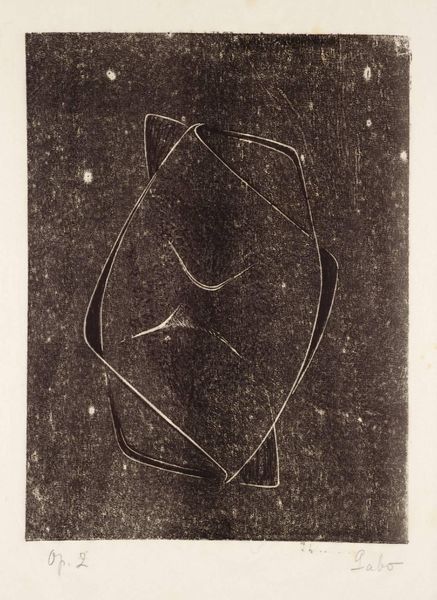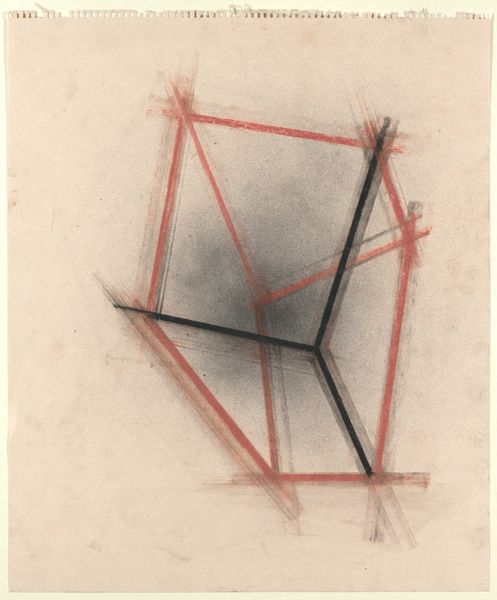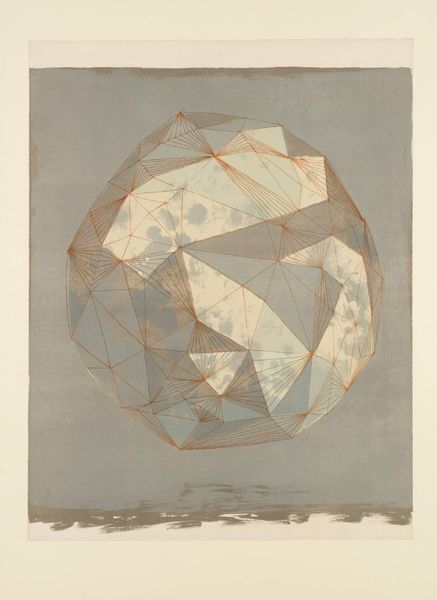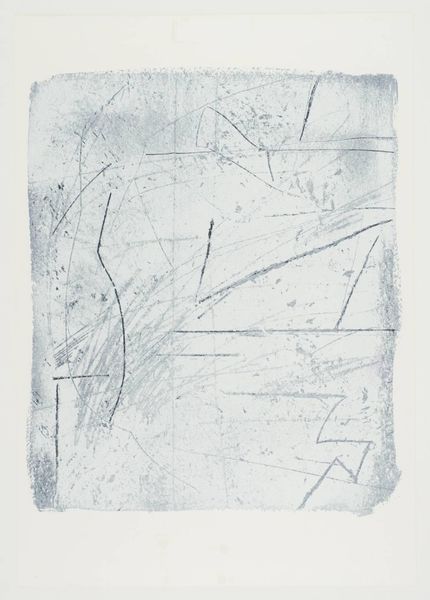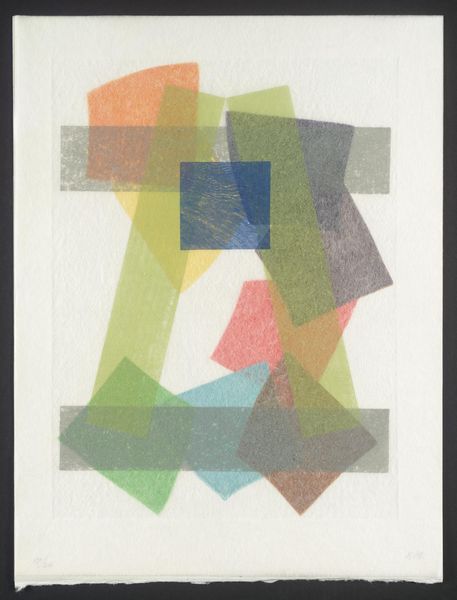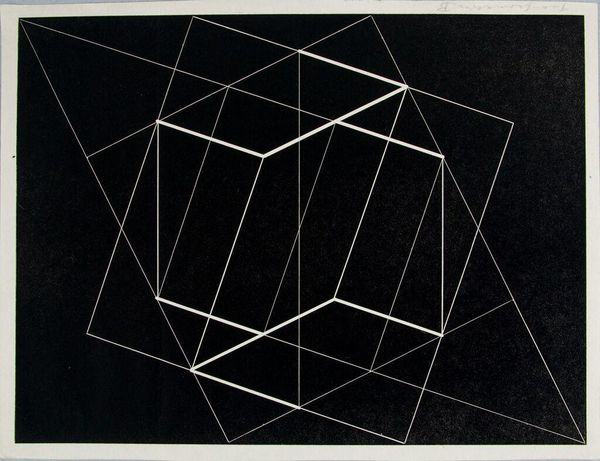![[no title] by Naum Gabo](/_next/image?url=https%3A%2F%2Fd2w8kbdekdi1gv.cloudfront.net%2FeyJidWNrZXQiOiAiYXJ0ZXJhLWltYWdlcy1idWNrZXQiLCAia2V5IjogImFydHdvcmtzLzA3MTA2NGY1LTgyMzAtNDhhMi05ZTIwLTQ0MmMxOTRmOTg3MC8wNzEwNjRmNS04MjMwLTQ4YTItOWUyMC00NDJjMTk0Zjk4NzBfZnVsbC5qcGciLCAiZWRpdHMiOiB7InJlc2l6ZSI6IHsid2lkdGgiOiAxOTIwLCAiaGVpZ2h0IjogMTkyMCwgImZpdCI6ICJpbnNpZGUifX19&w=3840&q=75)
Dimensions: image: 305 x 357 mm
Copyright: The Work of Naum Gabo © Nina & Graham Williams/Tate, London 2014 | CC-BY-NC-ND 4.0 DEED, Photo: Tate
Editor: This untitled work by Naum Gabo, held at the Tate, is so striking! It’s a cyan-blue print with white lines forming abstract shapes. What social or historical context do you consider when viewing Gabo's work? Curator: Gabo’s embrace of abstraction during the early 20th century actively resisted the dominant modes of representation used to uphold oppressive power structures. How does the work challenge traditional notions of form and space? Editor: It feels so open, like it's defying gravity. I wonder if his work was a commentary on societal constraints? Curator: Precisely! Gabo's Constructivism wasn't just about aesthetics; it was a utopian vision, advocating for art to reflect and shape a more equitable and modern society, especially after the Russian Revolution. Editor: So, the abstract forms themselves become a statement against the status quo? Curator: Absolutely. The dynamic lines and non-objective forms can be viewed as a call for social change, a rejection of stagnant hierarchies. It's fascinating how art can embody such potent political ideas. Editor: I see the artwork in a new light now, thank you! Curator: Indeed. It is a potent reminder that art can reflect and even instigate societal change.
